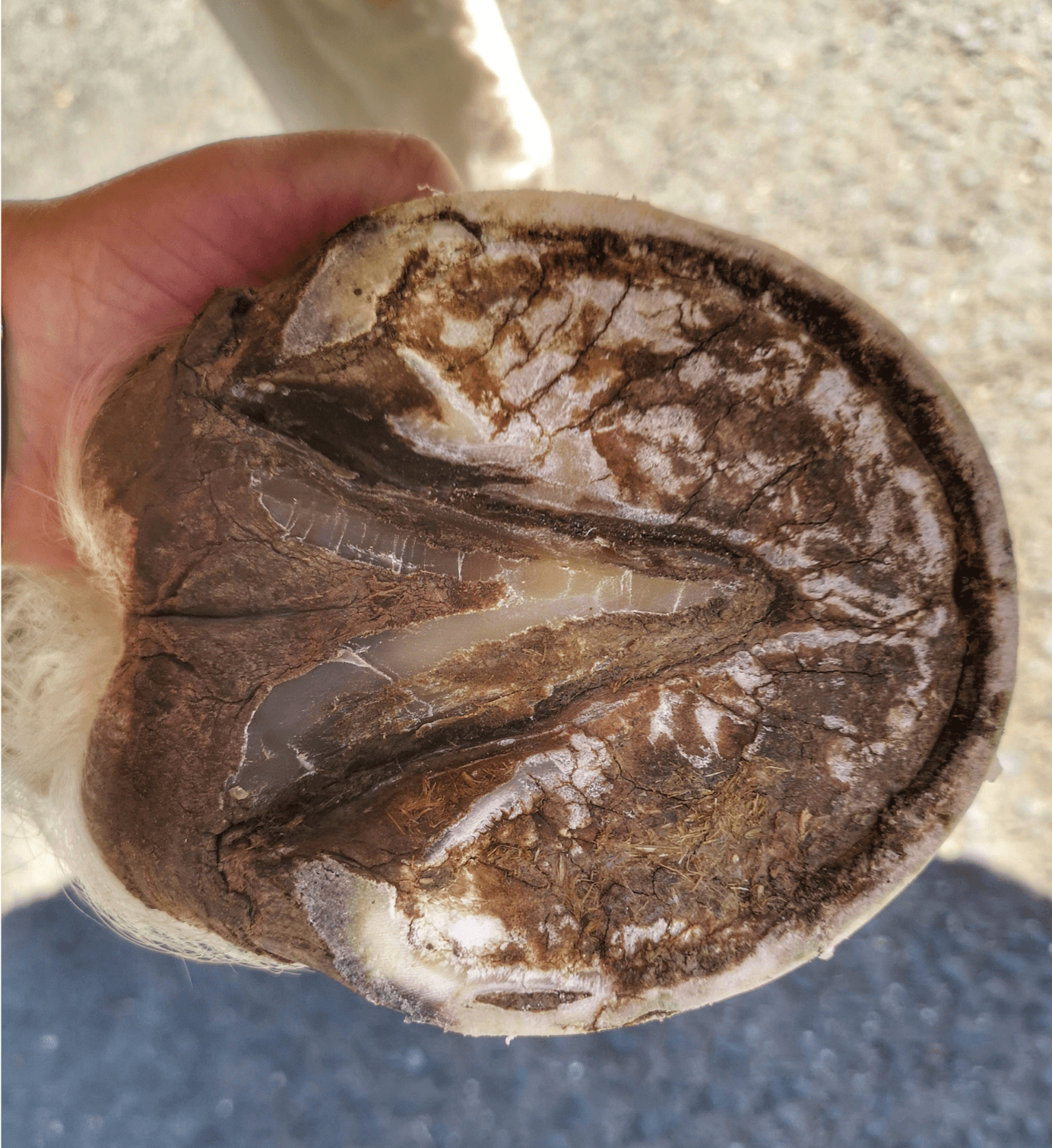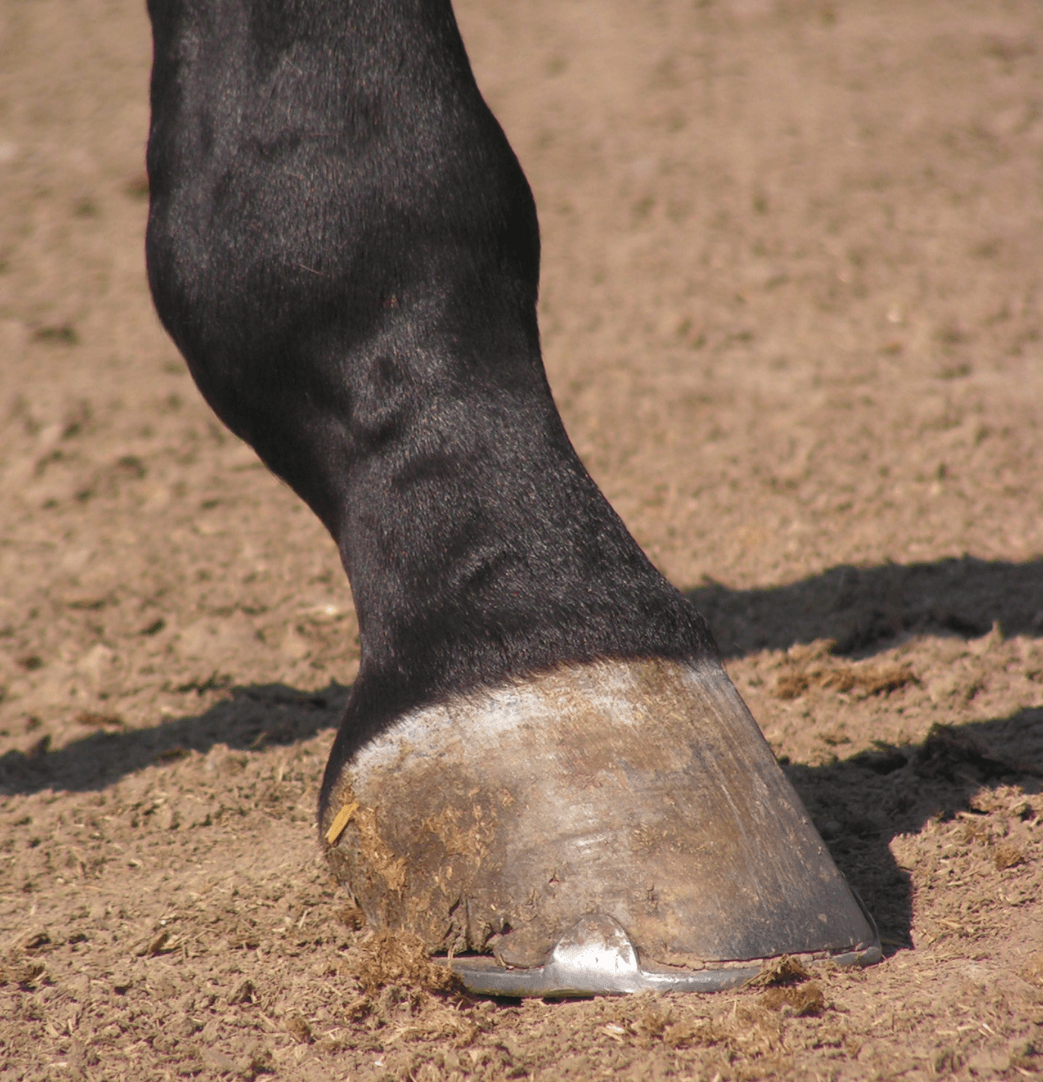Hoof Care
Proper hoof care is essential for maintaining your horse's health and soundness. Regular maintenance, prompt attention to issues like abscesses, and collaboration with a qualified hoof care professional are key components of effective hoof care. It is true what they say - no hoof, no horse! The information below is a guide only, and not to be substituted for professional advice. Always consult a qualified hoof care professional or vet first!

Regular Trimming for Barefoot Horses
For barefoot horses, it's recommended to schedule hoof trims every 4 to 6 weeks. This routine helps maintain optimal hoof condition, prevents overgrowth, and reduces the risk of issues such as cracking. Regular trimming ensures that the hooves wear evenly and maintain proper shape, supporting overall hoof health.
In New Zealand, you can work with either a farrier or barefoot trimmer for your trims, however it is recommended to ensure that anybody you work with has suitable qualifications and experience. There are many "methods" of trimming, some which are not scientifically backed and have been known to lead to severe lameness and other hoof-related issues. Always ask questions before you engage a new trimmer or farrier to ensure they are suitably qualified and you understand what methodologies and techniques they use, and then consult with your veterinarian to ensure the methods are suitable for you and your horse.
Understanding Hoof Abscesses
Hoof abscesses are a common cause of sudden lameness in horses. They occur when bacteria infiltrate the sensitive structures of the hoof, leading to localised infections. Recognising the signs of an abscess and providing appropriate care can facilitate a swift recovery.
Identifying a Hoof Abscess
Common indicators of a hoof abscess include:
Sudden Onset of Lameness: The horse may exhibit acute lameness, often favouring the affected hoof.
Heat in the Hoof: Increased warmth in the hoof wall or sole can signal inflammation.
Elevated Digital Pulse: A stronger-than-normal pulse in the affected limb may be detected.
Swelling: In some cases, swelling can extend up the leg if the abscess is severe.
If an abscess is suspected, it's advisable to consult with a veterinarian or qualified hoof care professional for an accurate diagnosis.
Caring for a Hoof Abscess
Treatment typically involves:
Locating and Draining the Abscess: A professional may pare the sole to allow the abscess to drain, relieving pressure.
Soaking the Hoof: Immersing the hoof in a warm Epsom salt solution can encourage further drainage and reduce infection.
Protecting the Hoof: Applying a poultice and wrapping the hoof helps keep it clean and promotes healing.
Providing Pain Relief: Anti-inflammatory medications may be recommended to manage pain and swelling.
Prompt and appropriate treatment is crucial to prevent complications and ensure a quick return to soundness.
Collaborating with a Qualified Professional
Regular collaboration with a qualified hoof care professional (farrier or trimmer) is vital for maintaining hoof health. A professional can provide expert trimming, identify potential issues early, and offer guidance tailored to your horse's specific needs. Establishing a consistent hoof care routine with your professional contributes significantly to your horse's overall well-being.
For more information on hoof care and to find a qualified farrier, visit the New Zealand Farriers Association.
Note: This information is intended as a general guide. Always consult with a professional for advice tailored to your horse's individual needs.

If you need more support and would like assistance from a qualified professional, we are here to help. The Rodney Animal Rescue Education Fund is available to help new horse owners, particularly those who have taken on an Off-the-track-Thoroughbred, and feel they are out of their depth or need assistance to ensure your new equine friend has all their needs met.
Learn more about the RAR Education Fund!
